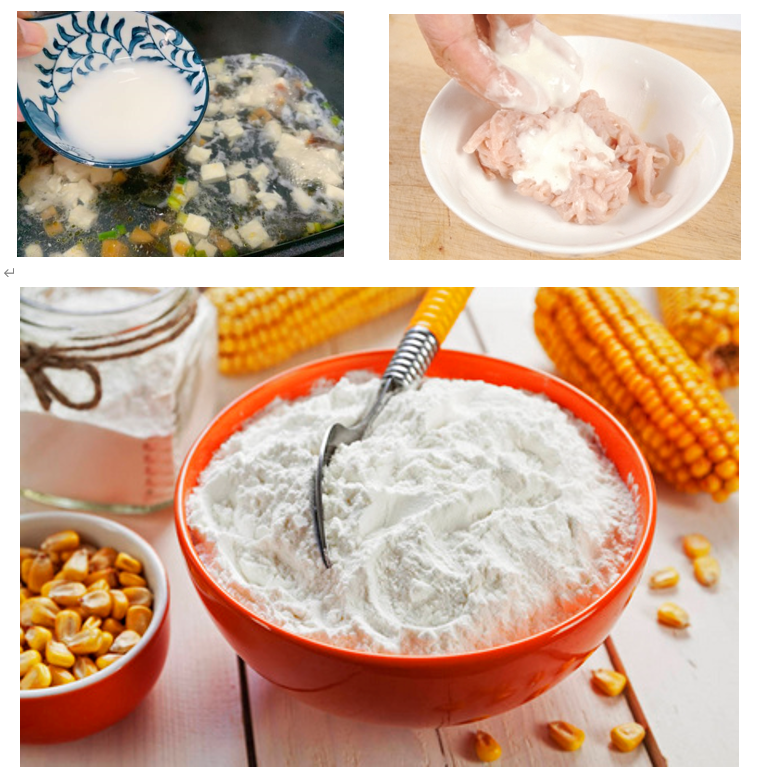Not Only Is This Food a Culinary Must-Have, But Surprisingly, It Can Also Cure Rare Diseases!
Have you ever eaten cornstarch?
He is the starch extracted from corn, white slightly yellowish powder, more delicate, usually used as a basting, hanging paste, patting powder, frying essential, but not very suitable for thickening.
When we cook chicken, pork, fish, shrimp and other foods, after the corn starch package, eat more crisp, smooth and tender. In addition, we can also use corn starch to make cakes, egg skins, cold noodles, puddings and other foods.
In addition to the rich and varied cuisine that cornstarch can make, there is such a disease that surprisingly requires cornstarch as one of his main treatments.
This disease is Glycogen Storage Diseases (GSD), a group of disorders caused by congenital enzyme defects in the processes of glycogen synthesis and breakdown, glycolysis and glucose release. Since glycogen is mainly stored in the liver and muscles, GSD is generally categorized into hepatic and muscular glycogen storage diseases based on the clinical manifestations of the patients and the organs involved.
There are usually 11 subtypes of GSD, of which types I, IV, VI, IX, and O are dominated by liver lesions, types II, V, and VII are dominated by muscle tissue involvement, and types II and III have both liver and muscle involvement.
Hypoglycemic symptoms are the main manifestation of hepatic glycogen storage disease, and are also characteristic of GSD type I. Especially in younger infants and children, crying, pallor, excessive sweating, unsteady sleep, or early morning vomiting and convulsions often occur due to hypoglycemia. And with increased activity, children are more likely to develop hypoglycemia.
Therefore, improving blood sugar becomes the first concern of GSD patients. Although the rich carbohydrates contained in various starchy foods such as rice, noodles and potatoes that we eat every day can maintain stable blood glucose between meals, or even for a longer period of time, GSD patients are unable to store or break down glycogen due to an inherent abnormality in glycogen synthesis or breakdown. However, due to GSD’s congenital abnormality of glycogen synthesis or breakdown, it is unable to store or break down glycogen, which leads to the inability to maintain the child’s blood glucose within the normal range between meals, especially at night when the child has not been able to eat for a long period of time.
At this time, in addition to eating normal food, is to pay attention to corn starch instead of part of the ordinary staple food (rice, steamed bread, noodles, etc.). Because raw corn starch, as a slowly digestible carbohydrate, can gradually release glucose in the body, helping to keep the child’s blood glucose in a relatively stable range of levels, which is very important for the prevention of hypoglycemia.
So how should we go about it and how much cornstarch should we eat?
The corn starch consumed must be raw and not taken after de-heating process like our daily cooking to avoid affecting its slow release effect.
(1) Usually use cool boiled water for mixing, mix raw corn starch with cool boiled water, in the ratio of 1:2, stir well and then take it, or you can also take it with a small amount of milk powder.
(2) Raw cornstarch should not be consumed with lemon juice or vitamin C, otherwise the glucose in raw cornstarch will be released rapidly, which will lead to greater fluctuations in blood sugar.
(3) Most of the raw cornstarch in daily life is for cooking use rather than medicinal use, and attention should be paid to the purity of the product when purchasing. Especially after changing brands, you should observe the changes in blood glucose and contact your doctor in time to adjust the dosage.
(4) The dosage and frequency of use of raw corn starch vary with different ages, and should be taken under the joint guidance of pediatric endocrinology and clinical nutrition. Generally 1-2.5g/kg each time, once at 4-6 hours interval, once before bedtime for adults, but the specific intake and frequency for different ages and different disease characteristics should be consulted with the doctor.
(5) The time and dosage of intake should be adjusted according to the blood glucose situation and under the guidance of a doctor. During the daytime usually between meals, and at night usually before bedtime and in the early morning.
(6) For heavier children and adult patients, it is important to follow up regularly to avoid excessive intake leading to weight gain.
(7) For infants aged 6-12 months, it is recommended to choose maltodextrin and feed on demand as pancreatic amylase is not yet functioning well.
In addition, there are different treatments for different types of GSD, and not all types require treatment with raw corn starch. Parents and patients should visit the pediatric endocrinology and clinical nutrition departments of hospitals for consultation and follow-up.




